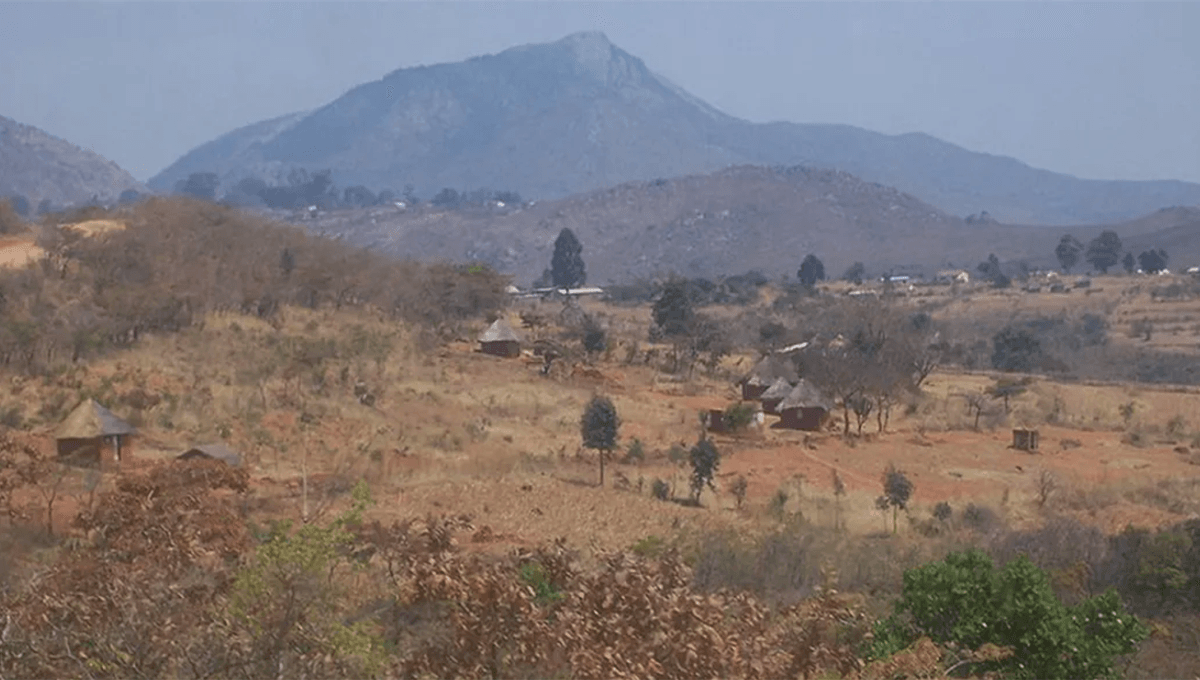
A new Netflix documentary series, named Encounters, has explored eyewitness testimony of unidentified flying objects (UFOs) and supposed encounters with alien species, including one from 1994. But what really took place on that day?
On September 16, 1994, 62 students at the Ariel School in Ruwa, Zimbabwe, claimed to witness an unknown craft descend from the sky and land in a field nearby.
The incident, which would become known as the Ariel School Phenomenon in UFO circles, started out on a fairly normal day. At break time – while the teachers remained inside for a faculty meeting – some of the children claim to have seen a silvery disc land on a hill just out of bounds. The children reportedly ran to the edge of the school grounds to get a better look, with several claiming that they saw figures emerge from what they described as a craft.
The children described the event – which they reported as having lasted up to 15 minutes – to their teachers after the break had ended, to much (warranted) skepticism. However, when they talked to their parents that night, they had questions that were then asked of the faculty.
With this prompting, and the intervention of a local UFO researcher, the headteacher of the school asked the children to draw what they had seen. They came back with pretty similar images of silvery, classic UFO-type crafts, sometimes complete with alien figures standing nearby.
Drawings of the incident can be seen in this YouTube video from Perplexus.
“It looked like it was glinting in the trees. It looked like a disc. Like a round disc,” one child witness told the BBC a few days after the incident. “I saw something silver on the ground amongst the trees. And a person in black,” another said.
The story only gets more complicated from here, making it difficult to figure out what exactly went on.
The children were interviewed by local UFO researcher Cynthia Hind the day after the event. What Hind found curious was that the students – who had diverse backgrounds, though all from wealthy families as tuition was expensive – described similar features to the figures and UFO, despite interpreting the phenomenon in wildly different ways based on their own upbringing.
Some thought that the figures were Zvikwambo (spirits of humans, raised by magic) or tokoloshe (evil goblin creatures of Shona and Ndebele folklore). Hind believed these different interpretations, accompanied by similar drawings and descriptions, gave more credibility to the idea that the children had all seen a similar event.
She also believed that the kids would not have had access to media about UFOs that could have tainted their testimony or planted similar images in their imaginations, telling the TV show Sightings “a lot of these children don’t go to the movies. They live in the country. Parents are farmers”. The argument being that if they had not encountered these images before and then described something similar, it gives more credibility to their alien encounter being real.
Next came a Harvard professor of psychiatry, John Mack, to interview the children. Through testimony collected by Mack, a new narrative emerged. When talking to the professor – who had recently published a book on UFOs and was heavily invested in the topic – the children reported receiving telepathic messages from the “aliens”, spreading an environmental message.
Mack had also recently been investigated by Harvard for giving credence to the idea to patients who had “reported a ‘close encounter’ with an Extraterrestrial life form that this experience might well have been real”.
Despite being one of the reasons why the Ariel School incident is so widely known, his interview technique was sloppy. Having arrived months after the incident, meaning children could consolidate their stories in their minds, it’s likely he prompted the children (perhaps unconsciously) to recall these telepathic events. Hind, meanwhile, had interviewed the children in groups of two to six, making the similarity of story details somewhat less impressive.
Another problem with Hind’s idea that the children did not know of typical depictions of aliens in media was that the country was in the middle of something of a UFO fever at the time. Two days previously, the Zenit-2 rocket from the Cosmos 2290 satellite launch had re-entered the atmosphere, causing a fireball in the sky. It wasn’t known what the object was by some local residents, and ZBC Radio had been hit with numerous calls claiming to have seen UFOs. Hind herself had learned of the incident after talking to the station herself, after a call was made about the school.
More sensible explanations – not requiring you to accept that aliens flew here, made a vague message to some school children, and then flew off again – range from mass hysteria to a simple prank on behalf of the school children. One team, documenting cases of mass hysteria in Africa at around this time period, says we should be able to label this and similar incidents as mass hysteria without investigating too much further.
“Time should not be wasted in a fruitless search for environmental precipitants, which by reinforcing behavior may serve to prolong the episode,” doctors wrote in the Malawi Medical Journal. “In other words, Mass hysteria should not be a diagnosis of exclusion, after all the physical, chemical and biological factors have been ruled out.”
An earlier version of this article was published in May 2022.
Source Link: The Ariel School Incident: The Story Behind The UFO Encounter Explored In Netflix Documentary